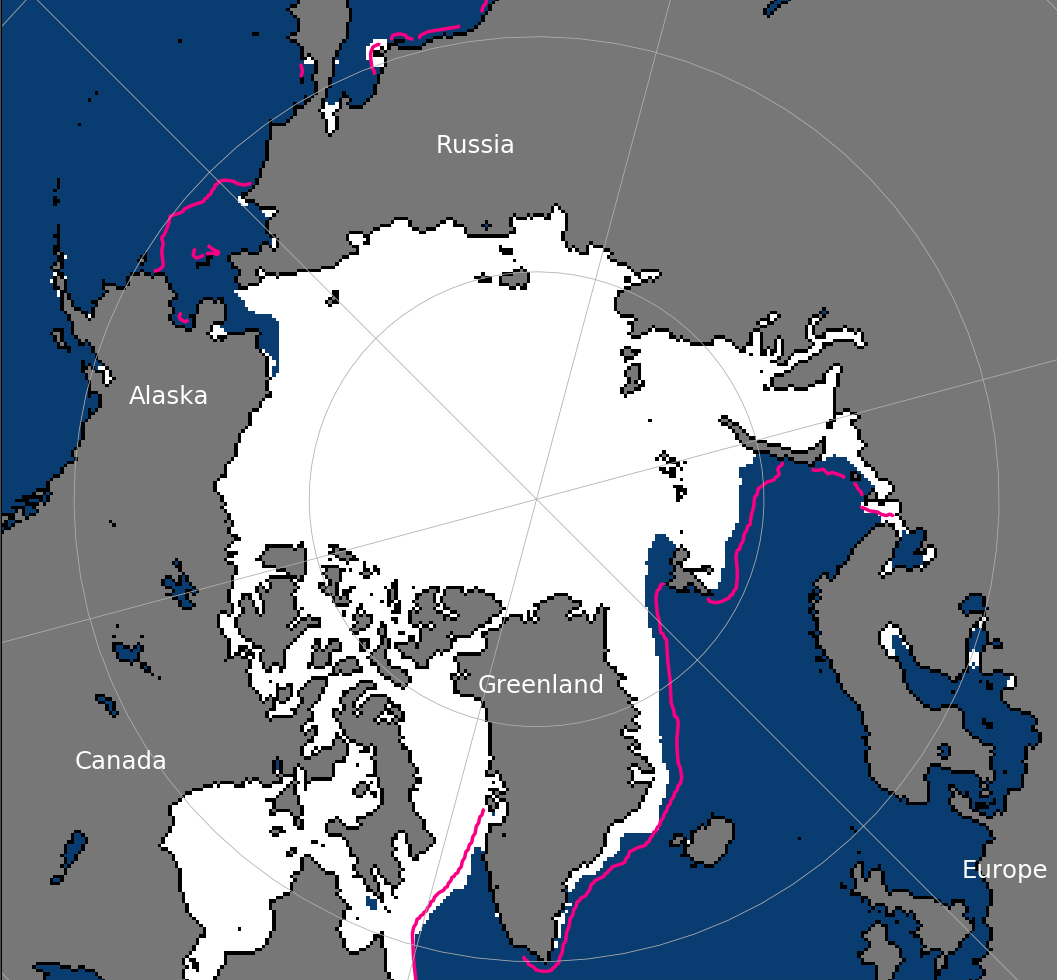Sea ice is near record low, with ice especially scarce on Pacific side off Alaska
Diminished ice was especially notable on the Alaska side of the Chukchi Sea, and in the Bering Sea — which was virtually ice-free.

Arctic sea ice extent for May was the second-lowest for that month in the satellite history, and the Pacific side of the Arctic has especially large areas of open water, the National Snow and Ice Data Center said.
The average May sea ice extent of 12.2 million square kilometers (4.7 million square miles) was barely above the record low for the month reached in 2016, the Colorado-based center said.
The month’s melt was notable in the Chukchi Sea, where areas of open water appeared west of Point Barrow, Alaska’s northernmost point, possibly the result of the warmed waters flowing from the ice-free Bering Sea north through the Bering Strait and possibly a product of weaker-than-normal ice through the winter, the NSIDC said. Ice retreat in the Sea of Okhotsk was “substantial” during the last month, and the waters in Hudson Bay began to open up, the NSIDC said.
The lack of May ice in the Bering Sea and scarcity of ice in the Chukchi Sea continues a trend in place for months.
It also continues a long-term trend, according to a newly published University of Alaska Fairbanks study of ice conditions over the past decades in Alaska communities along the Chukchi coast.
From 1979 to 2014, the annual open-water season expanded by 4.2 days per decade in Kotzebue, 5.6 days per decade in Shishmaref and 25 days per decade in Utqiagvik, the northernmost U.S. community that was long known as Barrow, said the study, published in the journal Crysophere. The expansion of ice-free conditions has had other spinoff effects — more wind, with many of the open-water days too dangerous for boating, and more effects on the shoreline. In Utqiagvik, the number of days with wind capable of causing coastal erosion tripled from 1979 to 2014, the study said. “If this trend continues, erosion rates are likely to increase in the future at Utqiagvik, placing the community’s substantial (compared to other Arctic coastal communities) coastal infrastructure at risk,” the study said.
Another dramatic effect has been the big jump in “false freeze-ups” and “false breakups,” periods of temporary freeze or melt that are reversed. “If the patters of the more recent years continue, the occurrence of false freeze-ups and break-ups could begin to define a new `normal’ for the transition periods between open water and sea ice cover,” the study said
Another study, by scientists at Stanford University, links the lack of fall sea ice to storm damage in Kivalina, a village on Alaska’s Chukchi Sea coast.
Kivalina is one of the coastal Alaska villages that is seeking to relocate because of rapid erosion. There, the open-water season has increased by 5.6 days per decade during the satellite record, according to a study published in the Canadian journal Arctic Science. The expansion is concentrated in the fall, with later freeze-up of sea ice, and there is a link to storm damage: 80 percent of the reported storms since 1970 have hit in the last 15 years, according to the study. Those major storms have always hit during the open-water season, the study said.
That study evaluates satellite data from 1979 to 2015 and issues a conclusion: “Ultimately, as the open-water season continues to increase, community relocation may be the only long-term adaptation strategy that can protect Kivalina from the effects of flooding and erosion.”
The fast May melt, which has continued into early June, was not limited to the Pacific side.
The average May temperature in Svalbard was 6 degrees Celsius (10.8 degrees Fahrenheit) above normal, the NSIDC reported. There was extensive open water around the island, reaching up to about Latitude 82 by the end of the month, the NSIDC said. The north and west coasts of Svalbard were largely ice-free by the end of the month, the NSIDC said.